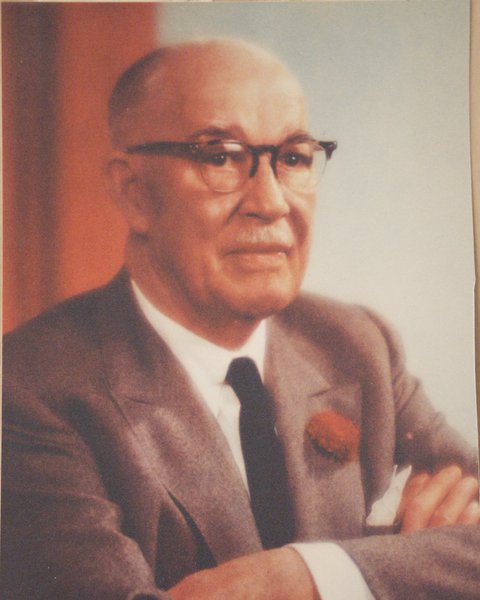
Class VII
Col. T.H. Barton Barton
Col. T.H. Barton was never a farmer. He never owned a herd of livestock, but he oiled the wheels of progress for the livestock industry in Arkansas as the influential president of the Arkansas Livestock Show Association. In his youth, Col. Barton rode a cattle car from his hometown of Garlington, Texas, to Eddy, New Mexico, and got a job as a telegraph messenger for a railroad company. He explored Carlsbad Caverns long before they became a tourist attraction. After studying agriculture at Texas A&M for a brief period, he came to Arkansas in the early 1920s and sold life insurance at Stamps, later becoming a bank cashier there. He returned to Texas and went into the lumber business until he enlisted in the U.S. Cavalry at the start of World War I. After the War, he turned his interest to oil and gas leases, and the story of his rise to riches is oil industry legend. The story goes, broke but farsighted, he went to New York and borrowed $500,000 from a bank in a two-hour period in 1930, strictly on his reputation. The Colonel made his fortune after he was 40, and he gave much of it away. Arkansas was the greatest beneficiary of his dreams and resources. He grew from obscurity to wealth and influence; often wore a red carnation in his lapel, a symbol of warmth and humanity and faith that life can be better—not just for him, but for his adopted Arkansas. Thus it was when one of the original 21 seeking a leader for the new livestock show venture said, “We need a man known in the state for his financial success and his moral values, someone the people have confidence in,” that the group focused its attention on Barton and sought his help. He served as president and board member of the Arkansas Livestock Show Association from its inception in 1937. When he retired as president of the association in 1959, saying it was time to turn the organization over to younger men, Arkansas had progressed from $38 million worth of livestock in 1938 to and an estimated value of over $231 million in 1960.
